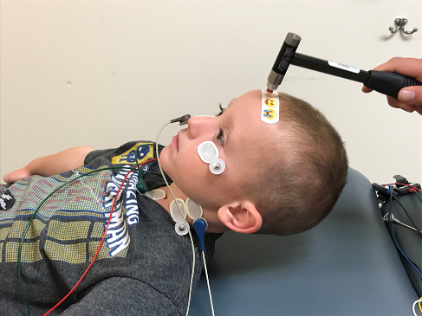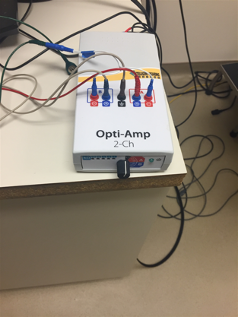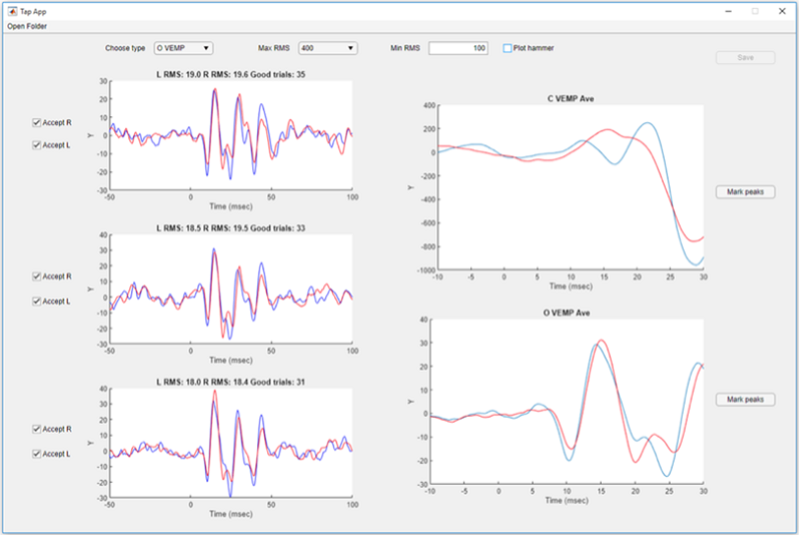Optimizing VEMP Testing Using a Reflex Hammer in Children
Software developed by Dr. Denis Fitzpatrick for Dr. Kristen Janky
The Problem:
Reflex hammer cervical and ocular vestibular evoked myogenic potentials (VEMPs) can assess aspects of vestibular function and have advantages over VEMPs elicited by acoustic stimulation. They are larger, can be generated using fewer trials, and be observed even when middle ear conduction is compromised. However, they are undocumented in pediatric populations and optimal stimulation parameters have not been determined. Current commercial devices don't permit the study of the gradations of force needed to generate a response.
The Solution:
An impulse hammer with integrated ICP quartz force sensor is used to quantify the peak force level delivered per tap within and between subjects, and its effect on c- and o-VEMP amplitude.
To view results and collect data, our engineer created a custom user interface using C++. This program provides instant feedback on the force and timing of the hammer strikes, the level of background EMG, as well as an ongoing average for responses.
A second program was also developed for this project using Matlab to provide off-line analysis of the data to elucidate the force level and magnitude of ongoing EMG optimal for producing reproducible results in pediatric populations.



